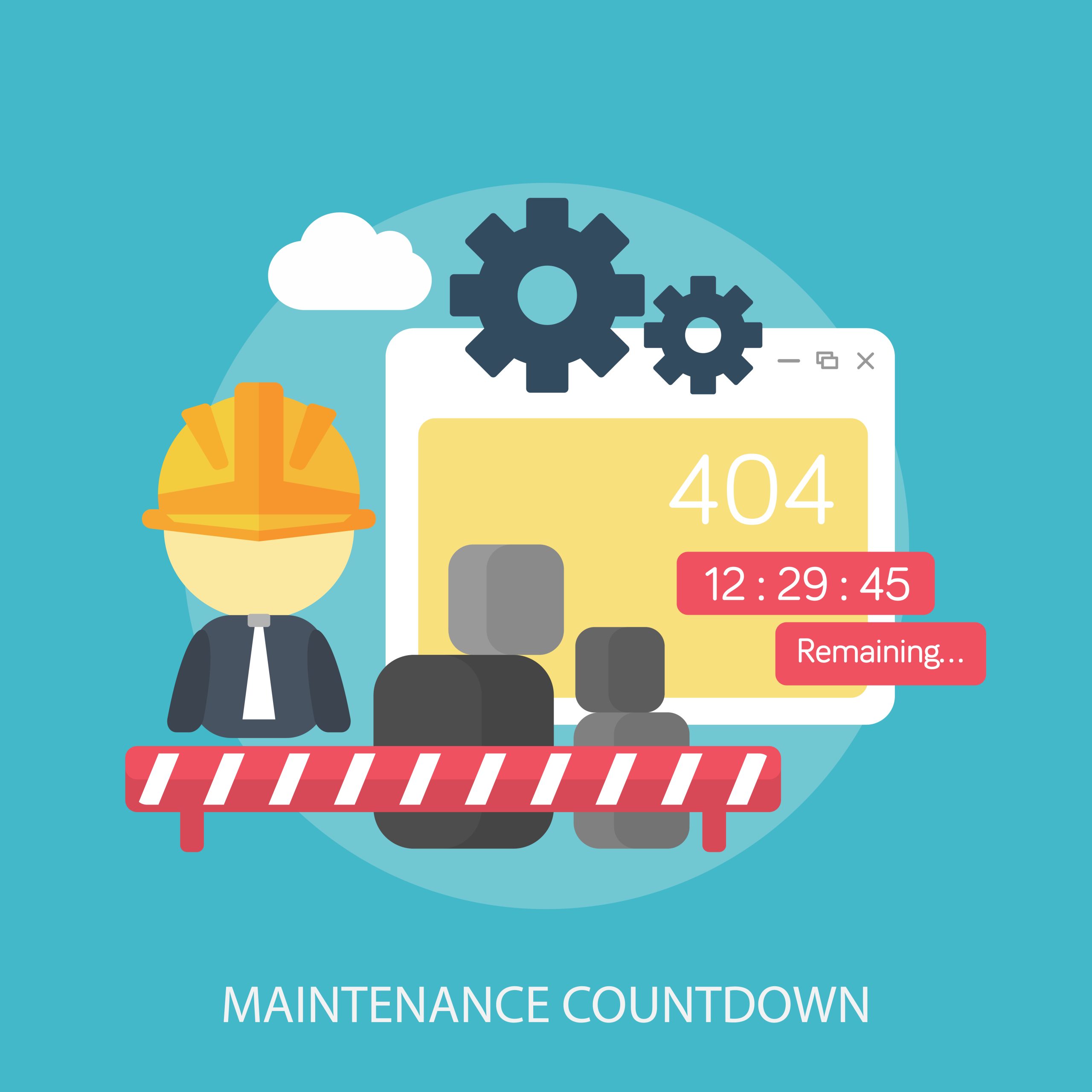Is your website operating at its full potential or is it falling behind due to inconsistent maintenance? In the era of rapid digital advancements, an efficiently maintained website can be your golden ticket to success. This article delves into the importance of web maintenance and highlights five key tasks that you cannot afford to neglect.
From checking and fixing broken links, updating your website’s software, ensuring the security measures are up-to-date, to optimizing page speed and regular site backups, we’ll guide you on how to keep your digital platform in prime condition. We will also emphasize on the need for a periodic SEO audit and adjustment. So, let’s dive in and explore how to make your website stand out in the crowded digital landscape.
TL;DR
- Web maintenance is vital in keeping your website optimized, securing your site, and maintaining user engagement.
- Regularly checking and repairing broken links help to maintain a positive user experience and improves SEO rankings.
- Ensuring software updates and security measures are routinely performed protects the website from hackers and enhances website performance.
- Optimizing page speed, through methods such as JS/CSS minification and image optimization, significantly improves the user experience.
- Performing regular site backups is critical to ensure data safety in the event of a security breach or site failure.
- Carrying out periodic SEO audits and adjustments is key to maintaining and improving your website’s visibility and search performance.
Understanding the Importance of Web Maintenance
In this digital age, the importance of maintaining your web presence cannot be overstated. The process of web maintenance involves taking care of an existing website by optimising its performance and updating content regularly, ensuring that it remains in peak condition. This circumvents potential issues, keeps your audience engaged, and magnifies online visibility. Web maintenance could be the difference between a successful and a failing digital platform.
Imagine a physical store — if it’s not properly maintained, with outdated displays and unattended issues, customers will be less likely to return. A website is no different. If links are broken, content outdated, or loading speed is slow, visitors may abandon the site, directly impacting your business. Therefore, maintaining your website not only portrays a positive image of your business but is also key to retaining and increasing traffic.
Of course, maintenance tasks can vary based on the type of website you operate. However, there are some crucial tasks that many websites commonly need. These include updating content and design to match evolving user expectations, ensuring site security with regular updates and patches, monitoring website performance for any drop in speed or increase in downtime, regular testing for broken links or errors, and making necessary adjustments for SEO.
Investing in regular web maintenance can seem time-consuming and perhaps costly. Yet, the cost of not doing it can be significantly devastating — a lower search engine ranking, loss of customers, or worse, a security breach, for instance. Therefore, web maintenance is an essential task that no business can afford to ignore.
Regularly Checking and Fixing Broken Links
One of the most crucial aspects of maintaining a website involves routinely checking and fixing broken links. Broken links on your site can lead to poor user experience thus increasing the bounce rate. Moreover, they could also harm your website’s reputation and negatively impact your site’s ranking in search engine results.
A broken link is essentially a hyperlink that leads to a page or file which no longer exists. They often occur when a page has been either moved or deleted, or when URL structure of a site has been changed. Whenever a user clicks on such links, they are generally directed to a default ‘404 error page’, indicating that the requested page cannot be found. This could potentially frustrate users and could even result in decreased website traffic.
Checking your website for broken links can be a time-consuming process, particularly if you have many pages and posts. However, there’s a host of online tools available, such as Google Webmaster Tools and various link checker plugins, which can assist you in detecting and repairing broken links efficiently.
Upon identifying a broken link, the first step to fix it is to figure out where the link was supposed to redirect the user. If the page is removed, the appropriate approach is often to either find a suitable replacement or remove the hyperlink completely. Alternatively, if the page has been redirected, correctly adjusting the URL in your hyperlink could resolve the issue.
Thus, regularly checking and fixing broken links is not something that can be pushed to the side. It should be an integral part of your web maintenance strategy to increase user satisfaction, enhance your website’s online reputation and positively affect your SEO ranking.
Updating Your Website’s Software Regularly
One essential task of Web maintenance that should never be overlooked is updating your website’s software on a regular basis. This crucial maintenance task ensures that your website continues to function effectively and provides users with an optimal experience. Updated software is not only able to deliver new features, but it can also fix any issues or bugs from the previous version, enhancing the overall functionality and efficiency of your website.
Ignoring regular software updates can leave your site vulnerable to security risks. Hackers are always on the lookout for sites that have outdated software which they can exploit. These vulnerabilities can lead to significant issues such as data breaches, loss of sensitive information, and even total shutdown of your website. Regular software updates help to patch these vulnerabilities, providing a crucial layer of security for your website.
Additionally, regularly updating your website’s software can significantly enhance website speed, performance, and user satisfaction. Outdated software might struggle to keep up with the latest technological advancements, negatively impacting load times and overall performance. Regular updates ensure that your website continues to run smoothly and can handle the ever-increasing demands of the internet landscape.
The frequency of your software updates depends on a variety of factors. These include the type of software, its version, and the needs of your site. As a good rule of thumb, regularly reviewing your system and checking for update notifications can help you ensure that the task is not overlooked. Ensure that someone capable, such as a web developer or a trusted IT professional, is entrusted with this important job.
Ensuring Website Security Measures are up-to-date
Ensuring that your website’s security measures are up-to-date is a fundamental web maintenance task that truly businesses can’t afford to ignore. In today’s digital age, cyber threats are evolving rapidly, and a single data breach can profoundly damage both your finances and your brand’s reputation. Therefore, making website security your top priority is paramount.
First and foremost, regular updates of your website’s software, including the content management system (CMS), plugins, and themes is crucial. Keeping your software up-to-date ensures that you are armed with the latest security patches to fend off potential exploit attacks. However, it’s not a task to be performed manually every once in a while; setting up automatic updates will help you stay on top of it.
Another crucial security measure is the use of SSL encryption. This protects the data exchanged between your site and its users from being intercepted by unauthorised entities. Not only is this essential for security, but search engines also favour websites with SSL encryption, meaning it can also enhance your SEO rankings.
In addition, you should make regular backups of your website a key part of your maintenance routine. This is your safety net in case of a crash or a security breach. Remember, backups should be stored off-site and encrypted to ensure their security. Ensure that the backups are comprehensive, and test restorations regularly to make sure they work when needed.
Lastly, implementing a strong password policy can greatly enhance your site’s security. Encourage or even require users to use complex, hard-to-guess passwords and update them regularly. Two-factor authentication is another powerful tool in your security arsenal that can provide an added layer of protection. By keeping your website’s security measures current and robust, you can significantly reduce the risk of security breaches and cyber threats.
Optimizing Page Speed for Better User Experience
Page speed is a vital aspect of web maintenance that can greatly impact user experience. If a website takes a long time to load, it can repel potential visitors, increase bounce rates, and ultimately affect your site’s SEO. Therefore, it’s crucial to regularly check your site’s load time and undertake necessary optimizations to enhance page speed and promote a better user experience.
One way to optimize page speed is by minimizing the amount of JavaScript and CSS files. These can significantly slow down your website because the browser must make additional requests to load these files. Using a minification tool can help in reducing the size of these files, as it eliminates unnecessary characters like white spaces, line breaks, and comments, without affecting the functionality of your code.
Image optimization is another useful technique. This involves reducing the file size of your images without compromising on quality. Tools, such as JPEG compressor or TinyPNG, can be immensely helpful in this process. Reduced image sizes mean lesser load times, creating a more seamless user experience.
Data caching is another method to improve site speed. When a visitor lands on your page, caching allows for the storage of certain page elements, so your page loads faster when the user revisits your website. Implementing a robust caching strategy can also reduce server load, which in turn, speeds up the loading process.
Regular Site Backups: A Critical Maintenance Task
One of the fundamental aspects of web maintenance that should not be overlooked is regular site backups. This process involves making copies of your site’s data to prevent any possible data loss or damage in case of a site failure or hacking incident. While it may seem like a tedious chore, site backups could potentially save your business from significant downtime or customer trust erosion in the face of a major website issue.
There are various ways to conduct site backups. Some website platforms provide in-built backup options, allowing automatic scheduling of backups to ensure consistency. However, this might not guarantee complete data protection as any server issues could affect the backup copies stored on the same server. Therefore, for maximum security, one should consider off-site backups. There are several reliable cloud platforms that offer this service, like Google Cloud, Amazon Web Services and Microsoft Azure, to name a few.
The complexity of backups may vary depending on the size and nature of the website. A simple blog site might require less frequent backups compared to a constantly updated e-commerce platform. However, irrespective of the size and scale, every website requires a backup strategy without fail.
Lastly, remember that backing up data is just half the job done. The final and equally critical part is site restoration – testing to ensure that the backed-up data can be smoothly restored to its original form. Missing this step could render all backup efforts pointless if data cannot be properly reinstated post-disruption.
Periodic SEO Audit and Adjustment
An essential web maintenance task that often gets overlooked is the periodic SEO audit and adjustment. Search engine optimization (SEO) is what helps your site rank higher in search engine results. Regularly auditing your site for SEO effectiveness ensures your site is easily discoverable and ranks highly for your targeted keywords.
An SEO audit involves a comprehensive assessment of various elements on your website that impact its visibility and search performance. These would include, but not limited to, technical SEO checkup, on-page SEO evaluation, off-page SEO analysis and competitive intelligence. This would allow you to understand areas of your website that are performing well, and those that need improvement.
Once the audit is complete, adjustments should be made based on the findings. These could be content modifications to better align with targeted keywords, improving the site accessibility or user interface or even backlink building. Optimization is not a one-time task, it requires consistent adjustments and refinements to meet the ever changing search algorithm updates and consumer search trends.
Ignoring this task can significantly impact your site’s SERP rankings, organic traffic and ultimately the bottom line. In today’s competitive digital landscape, maintaining SEO health is non-negotiable. It ensures your website remains visible, authoritative and valuable to your existing and potential customers.
Benefits of Regular Website Maintenance
Regular website maintenance is crucial for various reasons. Proper upkeep of your website helps build credibility with your prospective clients or customers. Displaying current information and up-to-date content shows that you are active in your business. It also prevents your users from experiencing errors, technical glitches, or broken links, which might drive them away from your site, and harm your brand reputation.
A well-maintained website ensures optimal performance and intact security. With the growing threat of cyber-attacks, keeping your website’s security features updated is fundamentally important. Regular maintenance would involve checking for system updates, monitoring suspicious activities and fixing security holes. Ensuring that the site is secure builds trust with your audience and protects your site from potential data breaches.
Website maintenance also improves the website’s SEO ranking. Constantly updating and adding fresh content to your site promotes better ranking on search engines, thereby leading to increased visibility and higher traffic. Apart from content, maintaining other SEO components such as meta tags, broken links, and loading speed are critical.
Moreover, website maintenance essentially helps in analyzing website traffic. By regularly assessing your website’s metrics and analytical data, maintenance tasks can assist in evaluating the effectiveness of your site and identifying areas that need improvement. It provides insights into how users interact with your site, contributing to better user experience design and more strategic marketing decisions.
Conclusion
In conclusion, regular website maintenance is an essential task in the digital era. It not only ensures optimal performance but also significantly safeguards your website from potential threats, such as broken links, outdated software, cyber threats, and data breaches. Understanding the various maintenance tasks and implementing them diligently can greatly enhance user experience, boost your SEO ranking and, most importantly, contribute to the overall success of your business.
Maintaining your website might seem daunting, given its intricate nature and the level of consistency it demands. However, making it a part of your regular business operations is absolutely necessary and is an investment sure to yield positive returns. After all, in today’s digital landscape, a well-maintained website is not just advantageous but a necessity for the success and longevity of your business in the online realm.











